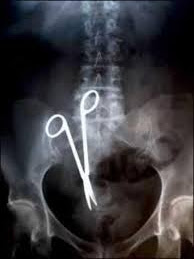 |
| Cuckoo's Nest Nurse Ratched on the silver screen at Downey VA |
One Flew Over the Cuckoo's Nest, based on a Ken Kesey novel, was a movie filmed on the back wards of an Oregon State Hospital for the Insane. It featured a down right despicable Nurse Ratched character that was domineering and abusive to her patients. She controlled everything on the ward from the TV to determining candidates for lobotomy. The scenes of the patients' on the ward was a spitting image of Building 66AB at Downey where I was working. Downey nurses, for the most part, were too burned out to dominate anyone. The modus operandi was just getting by until that Civil Service Retirement kicked in. There were no Nurse Ratcheds at Downey.
Downey had a rule that any closed ward group of patients must be accompanied by an RN on outings. I made it my personal mission to get these guys off that smoke filled, depressing ward as much as possible and organized walks, picnics, and even ball games. So when I heard about Cuckoos Nest being shown on movie night, I figured, what the heck? These guys are just about living the movie and I was curious how they would respond. I strolled onto the ward after supper and called out, "Movie night, who wants to go?"
Two dozen or so of the patients stepped up and we walked over to the theater. Sometime movies elicited shouting and bouts of unrestrained laughter, but during Cuckoo's Nest there was a strange silence from the crowd. The experience of sitting in a long term psychiatric hospital watching a movie filmed in such a location reminded me of watching a war movie in the middle of an active battlefield. Today one of the most overused words that pops up in contemporary banter is surreal.
Watching Cuckoo's nest at Downey VA with a group of schizophrenics was way beyond surreal. It was one of the most unusual experiences I've had as a nurse except perhaps for the time a patient filled his prosthetic leg with urine and asked for help putting it on. When I placed his stump in the prosthesis urine splashed everywhere to the delight of the young amputee.
After the movie ended, about half of the patients had no reaction what so ever, because the long term use of drugs like Thorazine had wiped out any trace of individual personality. A chemical lobotomy of sorts. Another group of patients had trouble separating reality from the movie characters and asked me to speak with Nurse Ratched to "straighten her out." The other small group identified with the characters and was delighted that someone had made a movie about them.
On the commute home, I kept thinking that I'm going to write about that Downey VA movie night experience down some day. I knew my lackluster writing skills would fail to communicate the bizarre nature of watching a movie imitating a mental hospital in a genuine metal hospital. At least I tried.






